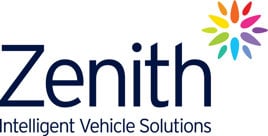HMRC guidance on relevant motoring expenditure and national insurance refunds following a high-profile court defeat has been criticised by John Messore from Innovation Professional Services.
The tax authority released an agent update in which they set out its position following its loss to Laing O’Rourke Services and Willmott Dixon Holdings in the courts.
Messore said: “HMRC did not appeal the decision, meaning they now accept what they have been saying for nearly 20 years was incorrect all along.
“Namely National Insurance relief has to be given at source by way of ‘disregarding’ part of the car allowance from earnings (for NI purposes) to the extent the employee has undertaken or claimed business mileage that month at less than the 45p maximum rate.”
HMRC’s November 2023 agent update explains how employees and employers can backdate relief claims – but say nothing about what to do going forward.
The Laing O’Rourke Services and Willmott Dixon Holdings ruling was all about employees who use their own vehicles for work, are reimbursed by their employer at less than 45p a mile and who also receive a round sum allowance, such as a car allowance, specifically aimed at helping employees to procure and then run their own vehicle on business.
However, pay items such as travel allowances or mobility allowances may not make the cut as they are not closely enough linked to actual or anticipated usage of a qualifying vehicle, i.e. car or van for the most part – though other vehicles might also count as qualifying vehicles – except cycles which are specifically excluded.
The ruling said that car allowances (paid in respect of actual or future use of a car) should be classed as RME – a defined term meaning the aggregate of all other relevant motoring expenditure incurred by the employer.
Significantly, therefore, National Insurance relief was available since April 2002 against some or all of the car allowances paid, just as Income Tax relief is available to employees via the Mileage Allowance Relief (MAR) scheme.
For income tax there is no limit on the relief since it is against all earnings – whereas for NIC the relief is limited to the aggregate of all relevant motoring expenditure.
Also, tax relief drops to 25p after 10,000 miles but for NIC the relief for cars and vans is always at 45p irrespective of miles driven.
In short, for the vast majority of UK companies the car allowance will have been subjected in full to employee and employer NICs via the payroll, yet the car allowance was most likely RME all along and therefore relief (or disregard) should have been given at source for the Qualifying Amount, to the extent the employee undertook business mileage and was reimbursed at less than the 45p maximum rate.
This means that both Primary and Secondary Class 1 NICs (i.e. employee and employer NIC), will have been overpaid by virtually every single UK company which pays a car allowance to staff – unless they had also reimbursed business mileage at 45p from the outset – and thereby used up the QA against the milage reimbursement – leaving no QA left with which to offset part of the Car Allowance, for NIC purposes, says Messore.
“Given the loss of a tax case at the Upper Tribunal and a U-turn of their guidance, for years HMRC have misinterpreted a legislative provision leading to overpayments of Secondary NICs and over-deduction and over-collection of Primary NICs from employees,” he added.
“Some have gone as far as saying that in hindsight employers have for 20 years made unlawful deductions from staff’s pay packets.
“As a result of the ruling employees and employers are now entitled to a refund of priory year NICs paid in error and they are entitled to relief going forward.”
The problem with retrospective claims, he explains, is limitation meaning you can only go back to 2017/18 whereas your employer will most likely have overpaid NICs for the 15 tax years prior to that – and there is now no way to recover any overpaid NICs for all of those earlier tax years.
“That NIC has been lost forever – except for a handful of taxpayers who obtained value added advice from firms such as mine and put in protective claims many years ago, which they can now cash in on,” he said.
“The problem with the latest agent update, apart from typos and mis-stating the case name is that they focus only on cars when this clarification of the law applies to all Qualifying Vehicles, which even includes motorbikes – but does not include cycles.
“It is also a bit rich for HMRC to say NICs are no longer due. The NICs were never due and were only paid because of misleading guidance from HMRC.
“Also, what does ‘to be successful all the existing rules still apply’? Which existing rules? What do they mean by ‘if evidence cannot be provided’, or what do they mean by ‘relevant evidence’ in para 10 or ‘by providing the reference of the relevant motoring expenditure’ in para 12?”
Messore continued: “It is clear that HMRC sadly have not even read the legislation and nor do not understand how Optional Remuneration Arrangements (OpRA) operates.
“They say, ‘no disregard is available on payments made that are within the definition of relevant motoring expenditure if salary is sacrificed from an individual’s pay’. This is absolute nonsense.
“At no point in the relevant regulation Para 7A does it talk about salary sacrifice. Instead it says ‘sub-paragraph (1) does not apply so far as the payment of relevant motoring expenditure within the meaning of regulation 22A(3) is made pursuant to optional remuneration arrangements’.”
If you read the OpRA regs at no point does it mention the words salary sacrifice, according to Messore.
“OpRA and salary sacrifice are completely different,” he said. “OpRA has many carve outs, special case exemptions and general exclusions from exemptions (excluded exemptions). To simply quote ‘salary sacrifice’ is sloppy and technically inaccurate.”
At para 9, HMRC says, ‘businesses with a similar fact pattern….’. Messore asked: “How is any taxpayer going to know if their fact pattern is similar to Laing O’Rourke when they have not seen any of Laing’s policies or documentation used in the Court case?
“At Innovation we do know what is in Laing’s policy and also Willmott Dixon, because we did a lot of the work behind the scenes over the years including writing some parts of the policy culminating in a victory for the taxpayers.
“Willmott and Laing were both able to submit annualised claims. HMRC is now suggesting that any new claim has to be by pay period.
“For weekly paid staff that means recalculating up to 364 (7x52) payslips to arrive a the revised NIC figure due as a result of now retrospectively applying the correct disregard.
“Next it seems completely impracticable to push taxpayers down the route of correcting up to 84 (7 x 12) RTI submissions for monthly paid staff when other taxpayers have been able to claim on a spreadsheet.
“Even if they allow a year end submission to be corrected taxpayers might still have to recalculate every week or month in any event to get the figure correct to the penny.”
The commonsense approach, according to Messore, is for the employers (who inadvertently and based on bad guidance from HMRC wrongly deducted NIC in the first place) to submit a claim for the company and the employee – since the employer is far more likely to hold all the historic data centrally than the employees.
“Indeed, many employees might not even be working for that employer anymore and so won’t be able to access historic mileage data. Yet HMRC envisages employees making their own claims,” he added.
“First do HMRC really want over 1 million employees submitting their own claims?”
Furthermore, he says that employees, particularly in large organisations, will not have a clue whether their employer has made a claim on their behalf or not.
The update also asks the employees to calculate the primary refund. This will have to include those months where the rate was actually 13.25% because of the Health and Social Care Levy and for any employee at the cusp of 12%/2% NIC this will be a “mathematically impossible task”, argues Messore.
HMRC can and sometimes do provide easement for all taxpayers and so rather than pushing employers down the route of resubmitting thousands of RTI corrections HMRC, Messore believes that HMRC should a) allow spreadsheet claims, b) on an annualised basis and c) encourage every employer to either i) submit a claim using a reputable expert such as Innovation Professional Services Ltd or ii) write to all staff to the effect that the company has no intention of claiming and staff should make their own NIC claims.
The problem with the latter option is that employers will still need to provide all employees with sufficient data to make a claim (which is more work than if the employer simply submitted a claim itself in the first place).
Messore asked: “If an employee submits a claim for Primary NIC refunds will that automatically trigger a refund of Secondary contributions to the employer – and how will HMRC make all those refunds?”
Finally, the one thing HMRC repeatedly stresses is the importance of being able to provide mileage evidence.
“Having specialised in this area and successfully advised clients for the last 18 years on this one subject, I am afraid the general public who rely on HMRC guidance will be none the wiser reading the update and may make incorrect decisions which will come back to bite them in the future,” said Messore.
“It would have been far better had HMRC first sent me a draft to correct.”





















Login to comment
Comments
No comments have been made yet.